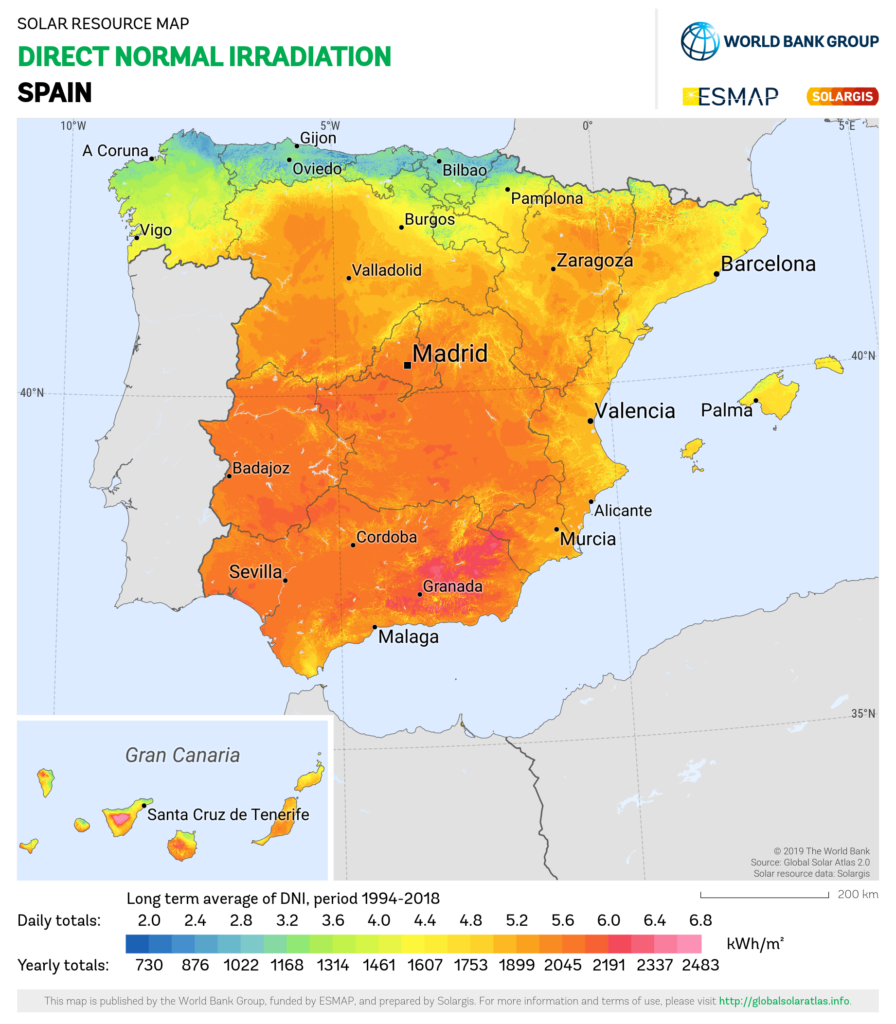Imagine you’re moving to Spain in 2025 and planning to buy a home with solar panels to generate electricity. Naturally, one of your first questions might be: how many solar panels will I need? Let’s break this down step by step to help you determine the right setup for your home.
Understanding Energy Consumption
The first step is to look at the average electricity demand of a household in Spain. According to the Spanish Electrical Network Corporation (REE), the average household consumes about 3,272 kWh per year. This will serve as a baseline for calculating the number of solar panels you need.
Evaluating Solar Potential
Next, you will want to understand how much solar energy is available in your chosen location. Spain has excellent solar resources, but the amount of sunlight varies by region. To assess this, you can use solar resource maps, like those provided by the World Bank Group. These maps show the Direct Normal Irradiance (DNI), which measures the amount of solar radiation received per square meter (kWh/m²) over time.
For example:
- In southern Spain, near cities like Sevilla, DNI values average 6.4–6.8 kWh/m² per day.
- In northern areas like Gijón, DNI values drop to around 2.8–3.2 kWh/m² per day.
Since southern Spain receives more sunlight, it’s a great choice for maximizing solar energy production.

Peak Sun Hours (PSH)
While DNI provides a general idea of solar potential, peak sun hours (PSH) give a more practical measure. PSH refers to the number of hours in a day when sunlight is strong enough to generate 1 kWh of energy per square meter. Unlike total daylight hours, PSH focuses on the most productive hours for solar panels.
For instance:
- Andalusia (southern Spain) averages 6 PSH per day.
- The Basque Country (northern Spain) averages around 3.9 PSH per day.
This variation plays a key role in determining how many panels you’ll need.
Calculating Your Solar Panel Needs
With these variables in mind, you can calculate the size of the solar panel system required to meet your energy needs. Let’s use Andalusia as an example, where the yearly PSH totals approximately 2,190 hours:
Step 1. Determine the system size using the following formula:
System Size (kW) = Annual Energy Demand (kWh) / Yearly PSH / Panel Efficiency
For a household consuming 3,272 kWh annually with a panel efficiency of 80%:
(3,272 kWh / 2,190 PSH) / 0.8 = 1.87 kW
Step 2. Convert to the number of panels
The average residential solar panel produces 350–470 watts, so let’s use 400 watts for simplicity:
- (1,870 watts / 400 watts) = 4.67 panels
This means you’ll need about 5 solar panels to fully meet your household’s energy demand. If you aim to cover only part of your consumption (e.g., 40%), simply scale the number of panels accordingly:
- 4.67 panels x 0.40 = 1.87 panels (~2 panels).
Other Factors to Consider
- Panel Models: Solar panel efficiency and power output vary by model, so check specifications carefully.
- Energy Goals: Decide if you want to cover 100% of your energy needs or just a portion. This flexibility allows for customization based on budget or space limitations.
- Location-Specific Data: Use tools and resources like Solar GIS maps and local PSH data to adjust calculations for your exact location.
Real Example
In the video below I show you an example on how I calculate the payback period in case you decide to buy solar panels for your home.
While this is just a brief introduction, I hope this helps you estimate better how many solar panels you may need at home as a first step analysis.
